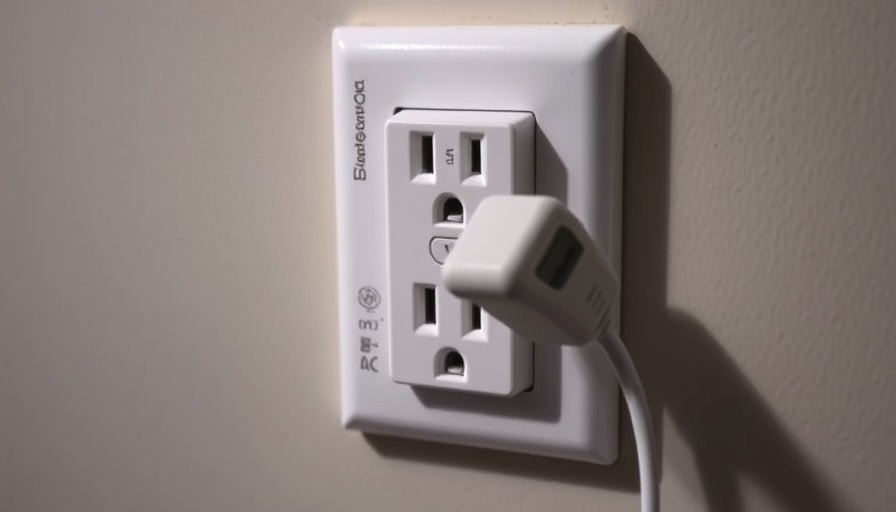
The Hidden Costs of Vampire Devices
In an era where energy prices continue to climb, understanding the concept of "vampire devices" in our homes is more important than ever. These devices, often left plugged in with minimal use, contribute significantly to our overall electricity bills without us even realizing it. Household items like chargers, gaming consoles, and even appliances can continue to consume power while in standby modes, leading to wasted energy and added expense. The term 'vampire devices' is aptly coined; they quietly drain our resources and finances every day.
How Unplugging Can Cut Costs Significantly
So, how exactly does unplugging these devices lead to reduced bills? Each device that retains power in standby mode can add approximately 10% to your energy consumption. For example, a television left on standby can cost households around $36 a year. By simply unplugging your devices when they are not in use, such as laptops, microwaves, and phone chargers, users can significantly lower their energy expenditure. The impact of this small action can lead to significant savings over time, especially in months with high energy demands due to heating or cooling.
The Surprising Devices That Drain Electricity
Many people might not realize that everyday devices can hook truthfully into their electrical expenses. A report from Energy Star reveals that your printer is one of the top offenders; if not powered down or unplugged, it can cost approximately $30 a year. Your Wi-Fi router also falls into the vampire category, consuming power even if devices are not actively connected. Additionally, other common culprits include older microwave models, gaming consoles, and charging devices that stay plugged in when not in use. By conducting a quick audit of your home, you can identify and eliminate unnecessary power drains.
Practical Steps for Energy Conservation
Implementing some simple practices can enhance energy conservation in your home. Here are practical steps you can take:
- Unplugging devices when not in use: Make it a habit to unplug items after use—this includes chargers and electronics.
- Using a power strip: Plug multiple devices into a single power strip and turn it off when the devices are not in use.
- Upgrading to energy-efficient appliances: If your budget allows, invest in Energy Star-rated appliances that consume less electricity even while operational.
Incorporating these habits can create not only immediate savings but also contribute to a more sustainable lifestyle in the long run.
Understanding Seasonality in Energy Costs
Seasonal fluctuations in energy usage are also vital to consider. During the summer months, many try to stay cool with air conditioning, leading to inflated energy bills. It is known that raising your thermostat by only a degree can save 3% of cooling costs, as indicated by the Department of Energy. Balancing thermostat settings with unplugging unused devices can create a more efficient energy usage strategy, lowering costs while maintaining comfort.
Looking Ahead: Future Trends in Energy Efficiency
As energy costs increase, homeowners are becoming more conscious about how they can reduce consumption and save money. Future trends are increasingly leaning toward smart home technology that can help users monitor and manage their energy usage effectively. With the introduction of smart plugs and energy monitors, individuals can keep track of how much energy they are consuming and identify devices that continue to drain electricity, prompting better management decisions.
As we face ongoing challenges with rising costs, being proactive about energy consumption becomes crucial. By unplugging these common household devices, you can bring down your electricity bills significantly, offering a sense of control in an unpredictable financial landscape.
Taking these steps leaves ample room for savings, while helping households become more energy-efficient. Remember, every small adjustment adds up toward a larger impact on your budget and the environment.
 Add Row
Add Row  Add
Add 




Write A Comment